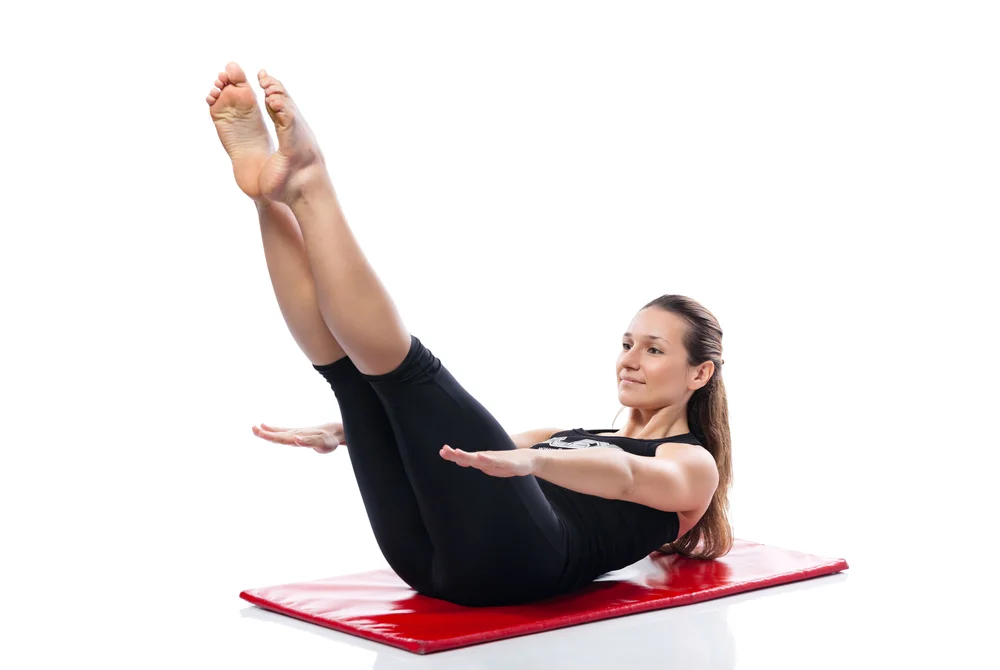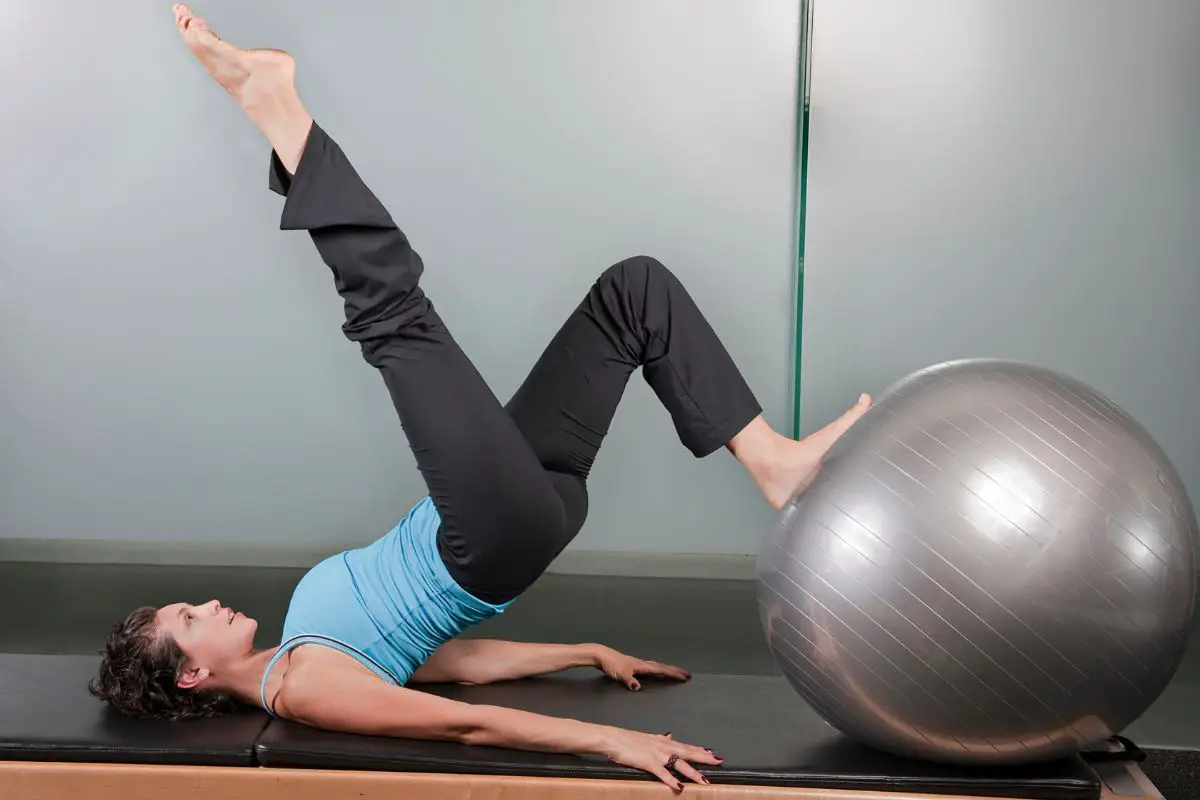Health

If you have ever been to a Pilates class, you have probably performed the hundred. Although a classic, beginner friendly Pilates move, the hundred is relatively challenging.
Devised by the father of Pilates, Joseph Pilates, the Pilates 100 requires you to hold the movement for 100 pumps.
This works your torso to build abdominal strength and improve stability.
In general, the 100 is performed early on in Pilates classes because it helps beginners learn how to synchronize their breath and ab movements required for most Pilates exercises.
The Pilates 100 movement is typically performed lying on the mat, and involves alternating between lifting the head, shoulders, and legs off the mat while exhaling and inhaling. Want to go it a go? Well, you’re in the right place!
Today, we are going to show you how to perform the Pilates 100 properly and safely so you don’t injure yourself.
We will also discuss the movement’s benefits and some common mistakes people make when trying the 100.
Let’s get started!
Pilates 100 Benefits
The hundred, also known as “hundreds,” targets several muscle groups in the body, in particular, the core.
It is one of the best exercises for beginners but has the capacity to be leveled up for the more advanced.
One reason why the hundred is so beneficial is that you only need to perform one set before feeling the rewards.
But, one set involves doing 100 reps. It entails performing five beats of your arms when inhaling, and then five beats when exhaling.
To complete the hundred, this needs to be done 10 times, hence the name.
Many Pilates exercises can put a lot of strain on the neck but the hundred is great to try before tackling some harder movements that will cause tension or stress around the neck and shoulders.
This dynamic exercise acts as a warm-up for your lungs and ab muscles as it requires you to coordinate your breathing and movements.
As well as your abdominal muscles, the hundred recruits your laterals and helps to develop trunk and scapula stabilization.
Let’s find out how to perform the hundred.
How To Perform The Pilates 100
Although somewhat challenging, you can modify the hundred to make it easier for yourself (more on that below).
Here’s a step-by-step guide so you can give the hundred a go at home today:
- Lay down on your back and raise your legs.
- Bend your legs at the knees to get into a tabletop position with your ankles and shins parallel to the ground.
- Now, take a large inhalation of breath and then exhale.
- When exhaling, lift your head up whilst your chin remains down. Curl your upper spine up off the mat to the bottom of your shoulder blades, using your abdominal muscles.
- Keep your shoulders slanting downwards and engaged.
- Look down to your abs and stay in this position. Now, inhale.
- Time to exhale again. Deepen the pull of your abdominal muscles when exhaling and extend your legs and arms.
- Stretch your legs out forward to where the ceiling and wall meet ahead of you. If required, you can raise your legs higher or lower, but your legs should only move as low as you can possibly go without starting to shake and without your spine lifting off the floor.
- Stretch your arms out straight but keep them low (a couple of inches off the ground). Your fingertips need to be reaching for the wall in front of you.
- Hold this position and inhale five short breaths, followed by five short breaths out. When doing this, move your arms gradually up and down in a controlled manner. Keep your neck and shoulders relaxed and you should feel your abs doing most of the work.
- Next, a cycle of ten breaths is needed. Every cycle should include five short inhales, followed by five short exhalation breaths.
- Simultaneously, pump your arms up and down in unison with your breathing.
- Maintain scooped abdominal muscles with your back flat on the mat and your head acting as an extension to your spine, looking down.
- Take large breaths into your sides and backs. You may need to practice lateral breathing first if you are not used to such breathing techniques.
- Finish up by maintaining a curved spine whilst bringing your needs into your chest.
- Grab your knees and roll your upper portion of your spine and head down to the ground.
- Finally, take a deep breath in and a deep breath out.
You have now completed the Pilates 100!
Pilates 100 Modifications to Try

Sometimes, you may need to modify the hundred movements to make it easier or more challenging for yourself.
If you suffer from neck issues or upper back pain, then you can perform these exercises with your legs extended, or in the tabletop position, with your head down on the ground.
Simplest Modifications
- Keep your head on the floor (mat) with your feet also flat on the mat with your knees bent.
- Once you have mastered this position, you can start to alternate the rising of both legs into the tabletop position, whilst keeping your other foot on the floor.
- When you reach halfway through the exercise, you can switch your legs.
Here is another modification to try:
- For this, you can keep your legs in a tabletop position as this is less challenging than doing so with extended legs.
- Start by laying with your back on the ground and legs raised with bent knees. Your thighs should be perpendicular to the ground.
- Your lower legs should be flat in a level tabletop form and your thighs should act as the table legs.
It is also possible to try this exercise with bent knees, with your feet flat on the ground, and then lift your upper body.
Challenging Modification
If you want to challenge yourself with the hundred, try the following modification:
- Lower your legs but not so much that they are past where you can comfortably control any movement. Typically, a 45-degree angle is plenty.
- Do not allow your spine to come up off the mat as you lower your legs.
When doing this you should start to feel the burn even more around your ab region.
Common Mistakes
Two common mistake people make are:
- Allowing their legs to go too low
- Painting their chin upwards
You should not allow your legs to go too low or arch your back. If you do this, you will end up working your back muscles rather than your abs, leading to a heightened risk of back injury.
Many people find that their chin points upward to the ceiling when raising their head off their Pilates mat.
If this happens, you can increase neck tension and cause possible injury. Instead, your chin should be tucked down to your chest with enough space to hold an egg between your chest and chin.
In Summary
The hundred is a classic yet challenging Pilates technique.
With a little practice, this exercise is perfect for synchronizing your breathing with your body movements, something that is key to Pilates.
Try the hundred today and let us know how you felt afterwards!
Thanks for reading!




